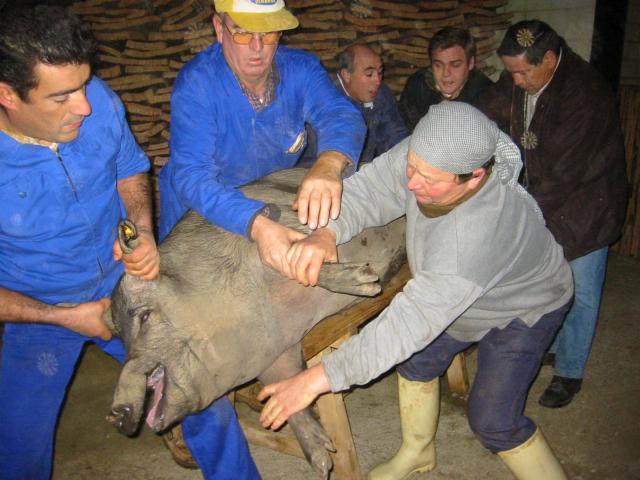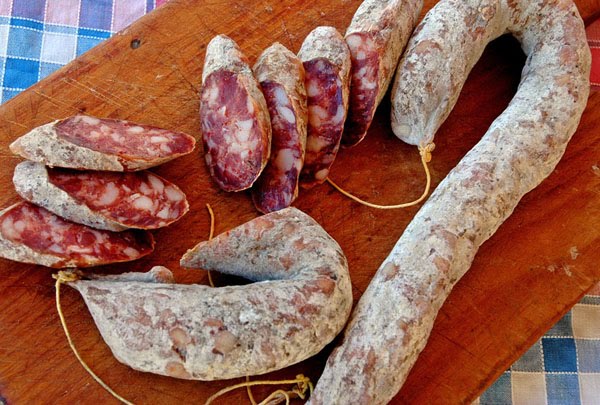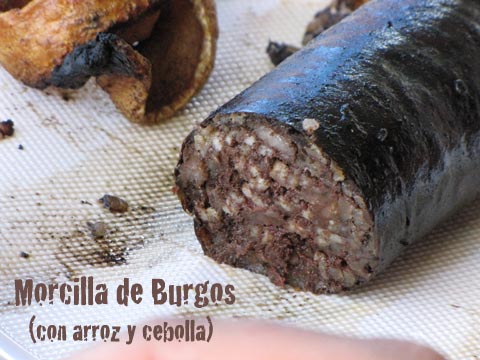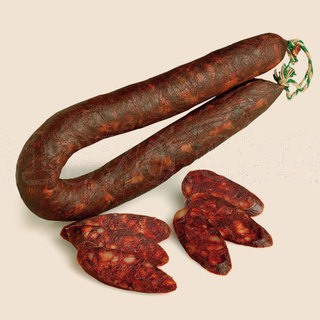
Pork must be the most commonly eaten animal in Spain. Not one bit is wasted, even the skin is fried and served as a snack, if you visit Spain during a Spanish course, you'll be able to try the much popular cortezas de cerdo. Perhaps Spain's history has a lot to do with the custom of making the most of one single animal; during the times of wars and civil wars there would be shortage of all kinds of food. Apart from the meat Spanish sausages are made, such as longaniza, chorizo, morcillas (black pudding), etc.
The domestic pig comes from wild boars, and there are archeological vestiges in Spain that prove these animals were tamed over 4,000 years old. When men formed groups and settled, the boars, and then pigs, would follow them to eat their waste and to protect themselves from predators that fled from humans. So man's history is tightly knit with the pig's.
Many times men's livelihood have depended on this animal, for instance, the sailors that first discovered and then conquered and colonized America carried live animals in their ships, so pork and chicken became the only source of protein in voyages that could last up to months. The animals would be taken on board alive, so the sustenance could be stretched for as long as possible

A typical tradition in most of rural Spain is the matanza: the sacrifice of one or more animals for the produce of the Spanish sausages and black puddings. As much as there are huge pig farms where the breeding and slaughter is industrialized, the ancestral custom of the matanza remains a popular one.
It takes place once a year, normally closer to the colder months. Whole families get together for the event, friends and neighbors are invited. Until fairly recently the head of family or an expert slaughterer would kill the animal (while four or more helped to hold it still), through different methods depending on the region. But now its regulated and only a vet can carry out the slaughter. This law was passed in order to ensure the animal a more humane death and the vet normally sedates the animal before it's killed.
The slaughter itself can last up to two or three days, depending on the number of animals to be sacrificed, and the whole family participates. Once the animal is killed, its hanged and buckets are placed under it to collect the blood which will be turned into black puddings. The rest of the animal will be used to prepare all sort of Spanish sausages.

One of the most typical types of Spanish sausages. Longanizas are made of minced pork meat stuffed in a casing of pig's intestine and flavored with different types of herbs and seasonings. The best known longanizas are:

The morcilla is a meatless Spanish sausage, the intestine casing is mainly filled with coagulated pig's blood and seasoned with different spices and vegetables such as garlic and in some cases rice. In Spain is tightly related to the Matanza and there are many varieties, of which the following are most popular:
Other pork sausages and cold meats

We recommend touring different regions of Spain to taste these delicious Spanish sausages in their source of origin if you travel to Spain.